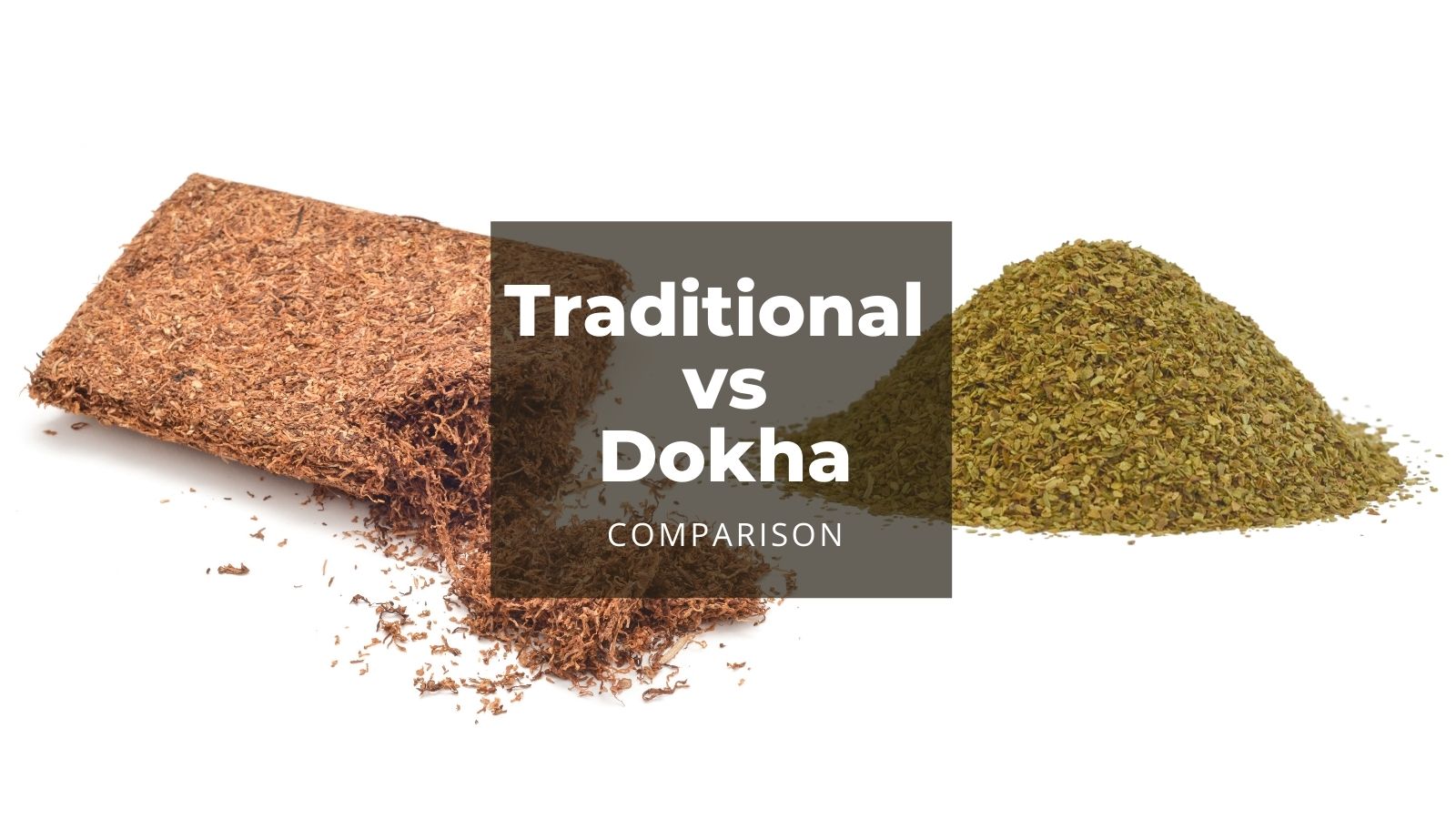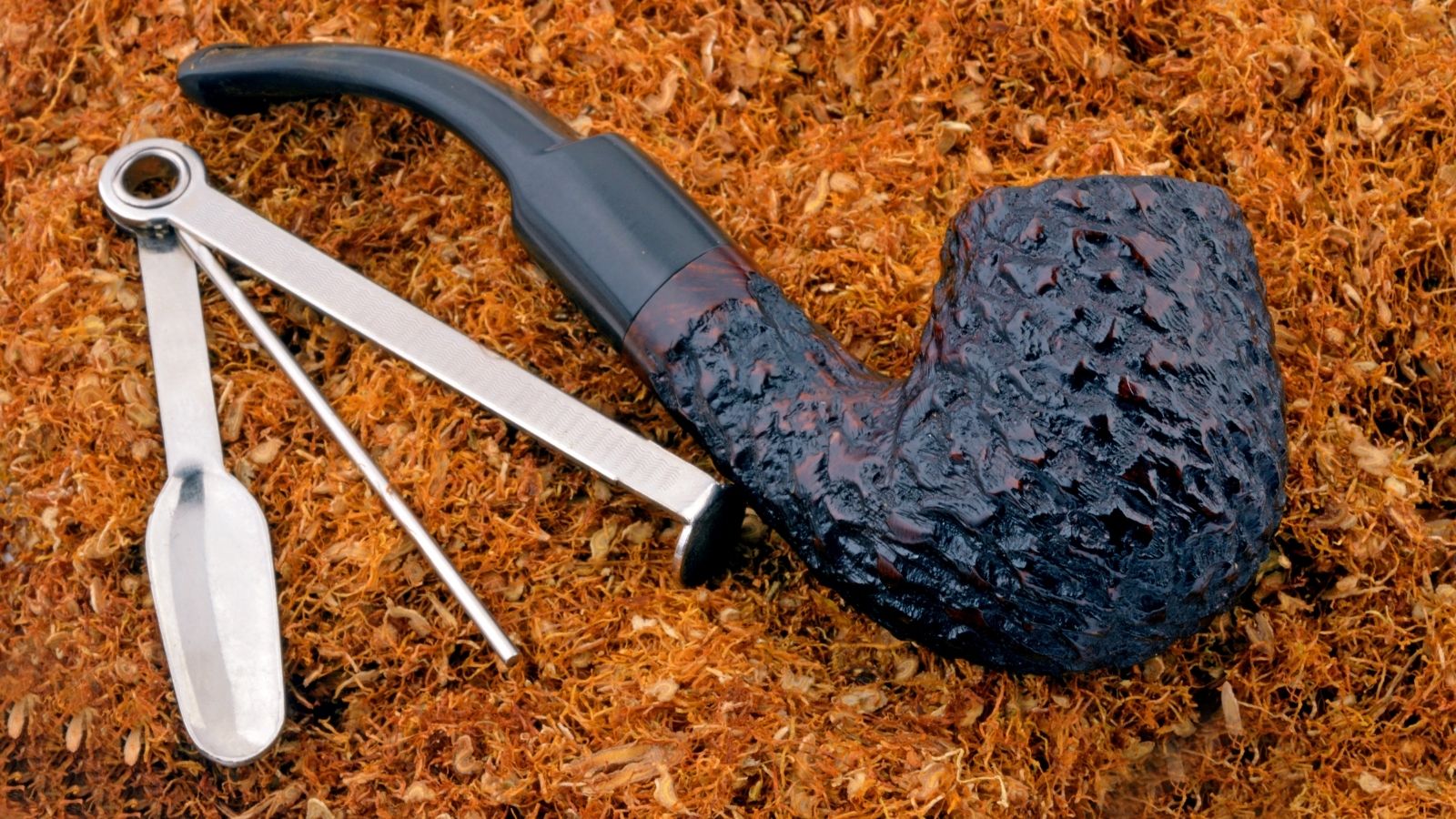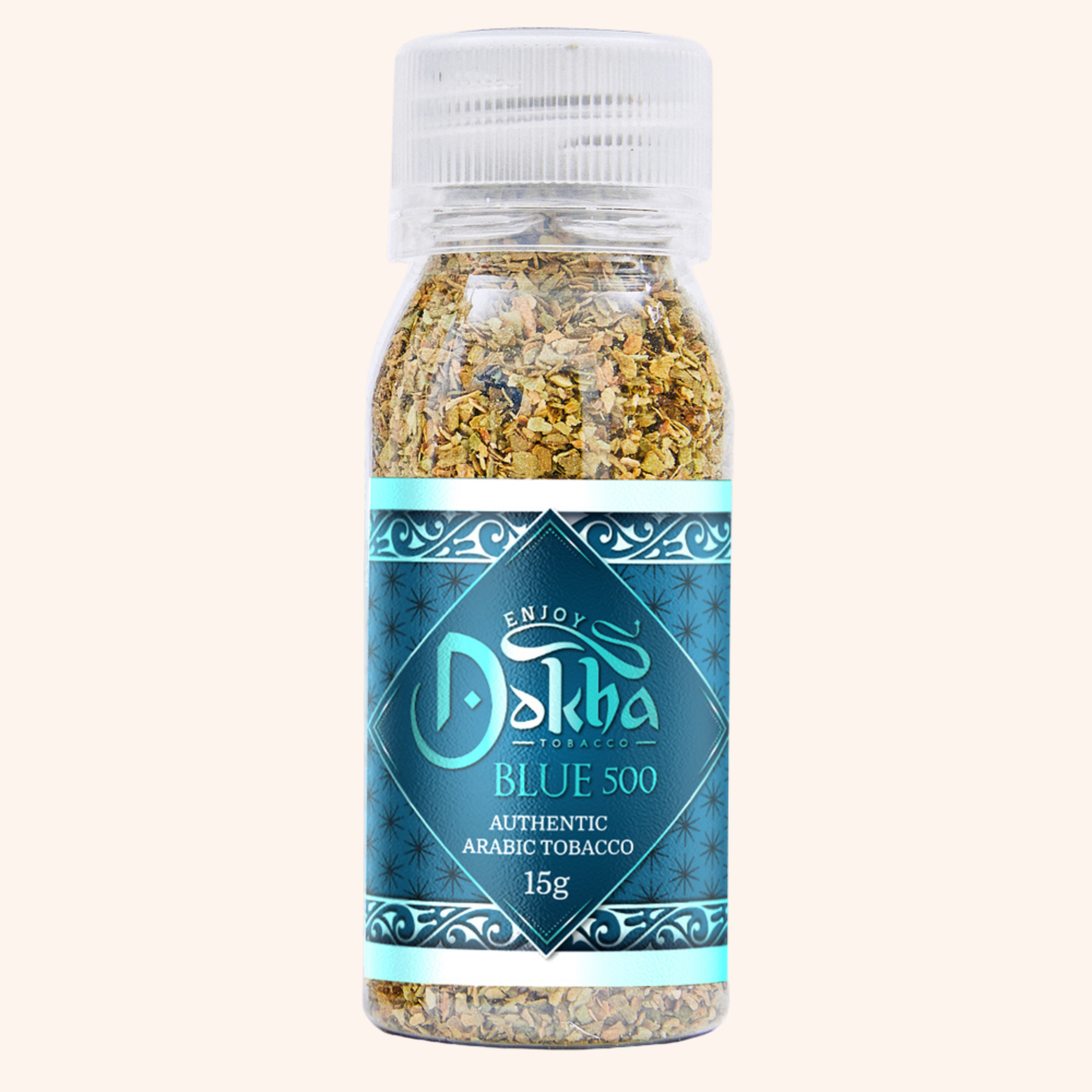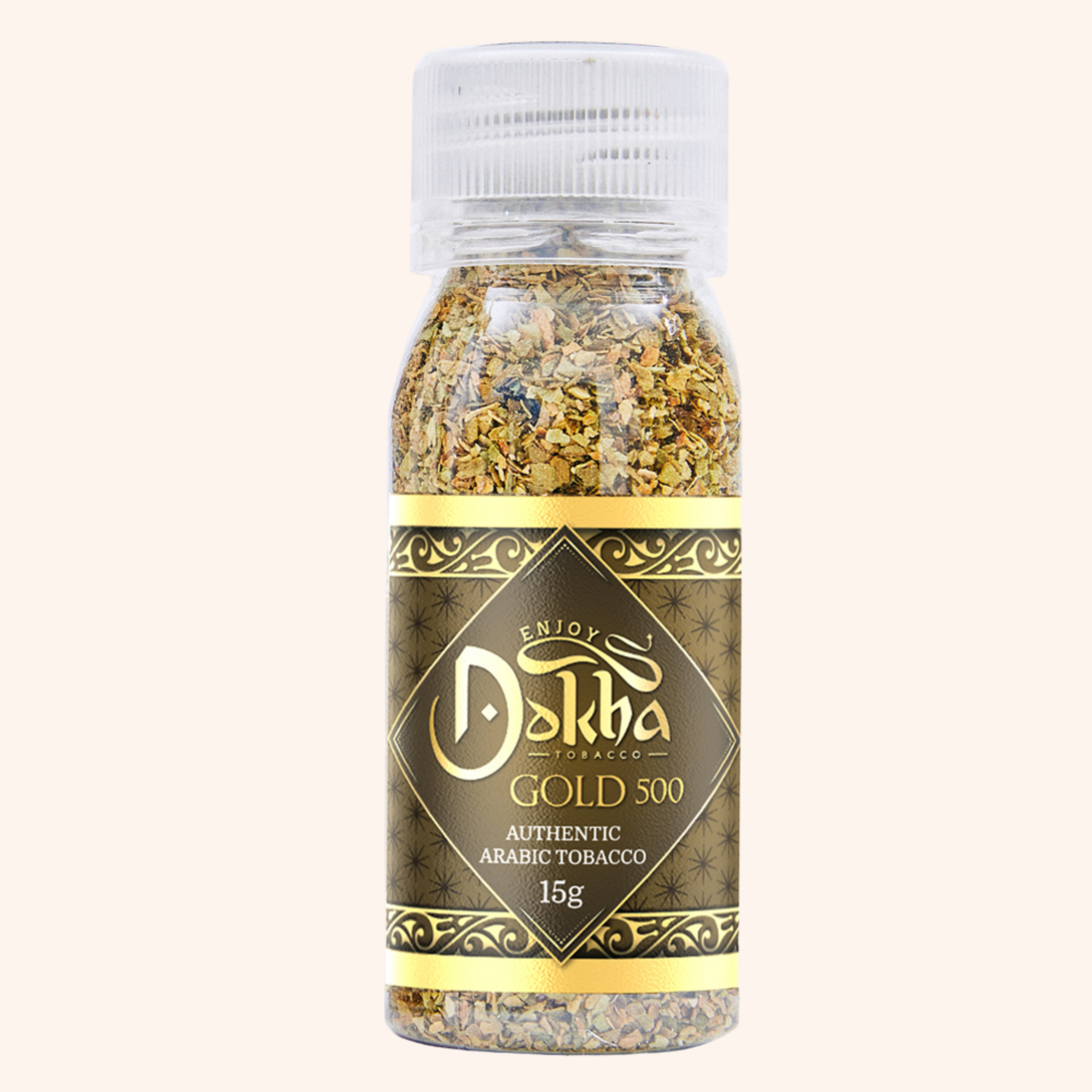Pipe Tobacco – A Complete Guide

Pipe Tobacco – A Complete Guide
This Pipe Tobacco Guide is a beginner’s guide to everything you need to know about pipe tobacco…
Pipe smoking has been built on the premise that the pleasure one gets out of the preparation of the tobacco is just as important to the pipe smoker as the flavour of the blend.
There are significant differences between pipe tobaccos, cigar tobaccos and cigarette tobaccos but for the purposes of this Pipe Tobacco Guide we are concentrating specifically on pipe tobacco.
Discover the Tradition of Dokha
What is Pipe tobacco?
Generally, pipe tobacco is loose leaf tobacco, burned in a traditional smoking pipe which has a bowl on the end in which the shredded tobacco leaves are put in and burned. Pipe tobacco has been around for centuries and various cultures around the world have their own methods of cultivation, fermentation, and mixing. It is recommended that if you want to experience pipe smoking you should try different flavours and styles of cut to find a tobacco that you really like.
History of Pipe tobacco
It is difficult to pinpoint exactly where pipe tobacco was initially grown. Suffice to say that tobacco plants are known to have grown in the wild for centuries, and over time have been cultivated and standardised, using more modern farming methods.
The indigenous peoples of the Americas are known to have used the tobacco plants in many ways, including for religious and medicinal purposes.
The Chinese consumed tobacco as early as the 1500s, however cigarettes didn’t arrive until the late 1800s, after the invention of the cigarette machine in 1881..
With the rise of colonialism around the 16th century, sailors and traders helped to spread the use of tobacco in various forms around the world. Smoke shops began to spring up to specifically cater for the new pipe smoker and a variety of flavoured blends were available to sample or to buy in bulk.
Nowadays, statistically speaking, China is by far the largest producer of tobacco and because of the size of their population they are probably also the world’s largest consumer. China produces some 2-3 million tons of tobacco leaf each year, which is about one third of the world’s production, closely followed by India, Brazil, and the USA. Because tobacco is seen as a very profitable industry, countries such as Argentina and Mediterranean countries like Greece, Italy and Spain all helped with the proliferation of tobacco products across the globe.

What is the difference between pipe tobacco and cigarette tobacco?
Basically, pipe tobacco is a more natural product, whereas cigarettes tend to be laden with chemicals. The flavour profile of pipe tobacco, even in its natural state, is also more complex than cigarette tobacco. Pipe tobaccos use natural sweeteners – anything from cherry berries to corn syrup or honey and alcohol, infused and pressed together under pressure, while cigarettes are basically just Virginia tobacco, with chemicals added… Over the years cigarette manufacturers have tried to add flavours to cigarettes and the obvious one is Menthol. Many countries, including the UK, have now banned all cigarette flavouring, to help reduce the number of youngsters from taking up smoking cigarettes in the first place.
Is smoking pipe tobacco healthier than smoking cigarettes?
There are a few reasons why someone might think that pipe tobacco is healthier than smoking cigarettes.
- Pipe tobacco tends to be a more natural form of smoking the tobacco leaf.
- Pipe tobacco isn’t laced with the same chemicals that cigarettes are known for, and which are so addictive.
- Pipe smokers don’t tend to inhale as much smoke as cigarette smokers do, however the nicotine still reaches the bloodstream through the membrane in the mouth.
Whilst there isn’t much scientific data available as to the health impact of smoking pipe tobacco as opposed to cigarettes, the risks are certainly the same…
Discover traditional Arabic Pipe Tobaccos
What are the different types of pipe tobacco?
Most tobaccos you can buy, either online or at your local tobacconist shop, are a blend of tobaccos from around the world. The blending of different tobaccos is an art and tobacco blenders will use different types of leaves to produce different burn rates and flavours – just like wine makers and beer brewers do, to change the flavour of their wines or beers.
For the purposes of this beginner’s Pipe Tobacco Guide, the following lists some popular pipe tobaccos, but obviously there are a myriad of flavours and cuts of tobaccos on the market, and different countries will have their own unique methods of producing different flavours too.
Perique, is known for its strong fruity aroma as well as being the connoisseur’s choice when it comes to choosing a quality pipe tobacco. Perique is also used as a component of various blended tobaccos. The tobacco plants used in the production of this fine tobacco blend are harvested in June.
The leaves are partially dried to ensure that they are still supple so the stems on the leaves and any remaining dirt can be easily removed. The leaves are rolled into torquettes and packed into whiskey barrels. The tobacco is kept under pressure using oak blocks and screw jacks to force most of the air out of the moist leaves. After a month or so, the pressure is released to allow a little air back into the tobacco. After about a year of doing this repeatedly, the Perique is ready to be consumed, although it could be kept fresh under pressure for many years – extended exposure to the air degrades the character of Perique. The finished product is a very dark brown (almost black) and is very moist with a fruity aroma.
Virginia is probably one of the world’s most popular blends – naturally sweet, so when it burns there is a nice aromatic flavour to your smoke. The natural sweetness of Virginia tobaccos combine nicely with other varieties such as Burley, Perique, Latakia and Orientals. There are no additives or flavours added in the production process. This pipe tobacco turns a strong golden yellowish orange colour during the curing process.
Burley has a nutty flavour which is mild on the palate and is a slow burning tobacco.
Latakia tobacco originated from Syria as it was named after the port city of Latakia. Although it is still produced in Syria it is also produced in Turkey and Cyprus… It is a sun-cured tobacco like so many other Turkish tobaccos, and then further fire cured using different woods and herbs, depending on the flavour the tobacco Artisan is trying to achieve. Latakia has a very rich, heavy taste. Strangely, Latakia is an ingredient of traditional English mixtures, which perhaps emanates from colonial times. It is used more as a blending tobacco as it is considered to be too strong for most people’s tastes to smoke on its own. A blending tobacco means that it can be added to other tobaccos to create different blends.
Because there are so many fabulous brands on the market today, we can only suggest that if you wish to take up smoking pipe tobacco, you do your research and try a few different brands until you find one that you love. Once you have sampled several different cuts and flavours you are bound to find something that suits your taste… We give an example of some different cuts/blends here:
Mac Baren’s Gold Block is a premium quality pipe tobacco which burns evenly, has a unique sweetness to it and utilises the ‘ribbon cut’.
Captain Black remains one of the best-selling pipe tobacco brands in the world, together with Davidoff or Erinmore.
Semois from Belgium is a ribbon cut pipe tobacco and very dry. It packs a wallop with floral tones…
Dunhill 965 was discontinued in the UK in 2018, however Peterson of Dublin relaunched this classic tobacco range under their own name. The name may have changed but the recipe is EXACTLY the same – it is made from a blend of brown Cavendish and light Orient tobaccos with a little Latakia leaf which when combined offers a cool smoke.
Amphora Original is a mix of Virginia, Burley and Empire Cavendish, ready rubbed with a little loose cut mixed in – a great all round natural tobacco taste with a hint of cocoa.
Mac Baren Plumcake pipe tobacco is a mixture of Virginia and Burley tobaccos, dark spicy Cavendish and a hint of Latakia. This mix gives Plumcake its aroma and the blend has also been flavoured with aged Jamaica rum – something to give it a little kick…
We should also give a mention to great established brands like Vauen, a popular German tobacco supplier, who only deals with superior quality pipe tobacco.
There are too many options, both from the point of view of ‘CUT’ and ‘FLAVOUR’ for the purposes of this Guide – should you wish to try some…

Explaining the various CUTS of pipe tobacco
The reason a simple explanation may be necessary here is because of the way the tobacco is cut can influence the overall smoking experience.
We have mentioned the Ribbon Cut when speaking of Mac Baren’s Gold Block, for example, but what exactly are we talking about when we use the term ‘Ribbon Cut’?
- Basically, the Ribbon Cut is the most common form of tobacco mixing, as it burns well and is easy to put into a pipe, offering consistency in flavour. Ribbon cut pipe tobaccos age much quicker than other cuts, so the Manufacturers also like it, as processing it is much less labour intensive. Ribbon cut tobaccos separate differently and have a much thicker consistency…
- Shag tobacco is a finer cut ribbon, pressed in a square shape and cut, but the aging process is basically the same. Shag smokes faster than other cuts but this depends on the moisture content of the tobacco and how firmly the tobacco is loaded into the bowl of the pipe. If the bowl is packed very tightly then the burn rate is slower than tobacco which is more loosely packed into the bowl.
- Ready Rubbed pipe tobacco is a cross between a fully loose ribbon cut mixture and a flake. A blend is pressed into a flake and then cut and rubbed out to the consistency required.
- Plug tobacco is just a block of tobacco which can be put through a cutter and cut into flakes. The plug can be cut into thicker or thinner strips according to the customer’s choice… if you purchase a ‘block’ of tobacco you can use a knife to cut exactly what you want to smoke.
- Crumble Cake Tobacco means that a blend is made into loose ribbon and then it is pressed, but not pressed as tightly as if it were a plug or flake… A crumble cake plug has been pressed using ribbon-cut tobacco rather than large pieces of leaf or whole leaves such as in flakes. Crumble Cake has some of the same characteristics of plug tobacco as its just ribbon tobacco that has been compressed, but you can pinch a little piece off and rub it out to get a more fermented ribbon cut tobacco.
- Flake Tobacco has been blended and moisture has been added – some manufacturers use a sugar casing or other binder to hold it together and then it is pressed. Moisture levels must be properly controlled and adjusted during pressing. If its too dry the leaf can break up too easily……
- Cube Cut means taking a couple of flakes and cutting them with scissors crosswise into cubes. Cube cut tobaccos lets more air into the mix than that of flakes, so the aging results can fall somewhere between flakes and ribbons.
- Rope Tobacco is a labour intensive hand made product. The rope is rolled by the tobacco Artisan and pressed through machinery creating large pieces of leaf with the midrib removed.
- Coin tobacco – flake version of rope tobacco. The flake version is cut off a pressed square and the coin version is cut from a rope of tobacco.

Profile of the different tobacco aromas
The term fermentation relating to tobacco is a process of refining sugars and breaking down starches in the tobacco leaves. Sugar in the leaf gradually processes through fermentation and turns into more refined sugars and alcohol. Microbes feed on the natural sugars in the leaves excreting CO2 and alcohol. As the alcohol builds up in the leaves the natural sugars become more accessible. The pipe tobacco gets its sweetness from this process, and it also becomes more mellow.
Ribbon cut tobacco has a bigger surface area open to the air so it will age differently and build a different flavour profile than that of plug or flake tobacco, for example.
Flake tobacco, on the other hand has spent some time pressed into a form which helps to start the fermentation process. This fermentation process changes the flavour profile of the tobacco as there is less oxygen touching all parts of the tobacco because the ‘flake slices’ are a part of a larger block of compressed tobacco.
Plug tobaccos have even less oxygen exposure as they are formed from tightly rolled rope so there is less oxidation. Only the outside of the plug is being exposed so the fermentation process is very slow which also produces a different flavour profile…
As explained previously, most tobaccos on the market around the world are blended which can mean that although you think you are purchasing a simple Virginia blend, it may have been blended with another component such as Perique or Burley, for example… and because of different ratios of potential blending, one bowl might differ ever so slightly from another…
Basically, in the scheme of things, the potential to create different flavours of pipe tobacco is endless…
Tobacco Mixers or Blenders as they are more colloquially known, proportion the various cuts of tobacco to create their own unique flavour profiles – there are aromatic and plain tobacco blends as a result.

Finding the right pipe tobacco
Flake tobacco v ready rubbed and Aromatic v non-aromatic
Obviously, for the uninitiated, this could prove to be a potential nightmare as choosing the right pipe tobacco, in terms of cut and flavour, is a very personal choice. If you are a beginner to smoking pipe tobacco, then you also have to manage your expectations v the reality. For this reason, we would recommend sampling various cuts of aromatic and non-aromatic blends, and also advise choosing a tobacco that is easy to smoke and burns easily – but suggest a ready rubbed tobacco could exorcise some of those demons for you…
- Dutch blend aromatic – an even burning, most satisfying smoke, with a gentle aroma. Made from carefully selected tobaccos, spiced with Burley and Oriental leaf.
- Gold block – the aristocrat of pipe tobaccos is even burning and is made to a centuries old sweetening process guaranteeing consistency of product.
- Craven mild (tobacco.44 Erinmore mix) is ready rubbed and is an easy smoke. This blend is a smooth, light, sweet smelling blend.
If you like the sweet smells of summer berries such as blackberries or cherries, then the name Cavendish will pop up on your radar. Cavendish is a mix of several different types of tobacco leaf that are sweet smelling.
Aromatic blends often get their names and smells from what’s more commonly known as ‘casing’. Casing is a syrup that can include fruit flavours and honey. This syrup is added during the tobacco processing, where the leaves are left to soak up the flavours for a period of time. Heat is then added to remove any excess moisture. Some blending Artisans also add alcohol such as rum or liqueurs to enhance their flavours. Popular casing ingredients can also include liquorice, corn syrup and sugar. By the time the moisture has been removed, distinctive ‘aromatic’ aromas are pounding around in your nostrils…
For some people aromatic pipe tobaccos are just too sweet smelling, so they choose a blend that doesn’t have any ‘casing’ added to enhance the natural flavour of the tobacco. Basic tobacco has a pretty strong natural grassy taste to it anyway – any tobacco blending of the basic tobacco will reflect that mix anyway….

Dokha Arabic Tobacco v Traditional Western Tobacco
Dokha is a Middle Eastern tobacco which burns smoothly, is not too harsh on the back of the throat and that leaves you with a pleasurable sensation all over when smoked known as the ‘BUZZ’.
This natural air-dried Arabic tobacco, is subtly different from Western pipe tobaccos in that it is cultivated and harvested in the mountainous regions of the UAE, with manually maintained irrigation systems running between the plants. These irrigation channels, which only use fresh water, are tended by local farmers whose knowledge of the growing of their tobacco plants is passed down from generation to generation. There are absolutely no additives or chemicals added to the tobacco during either the growing, harvesting or eventual bottling processes – nothing added and nothing taken away, except the stalks!
The way that the plants are grown gives Dokha its distinctive taste – the cool night air and hot sunny days also means that the farmers are guaranteed more than one crop rotation per season. Once harvested, the plants are cut and hung up to dry on battens in barn like structures to ensure that the nicotine gravitates to the tips of the leaves. The leaves are then graded between top leaves, middle leaves and bottom leaves and shredded into various cuts – some finer than others. The farmers themselves are master blenders, creating a myriad of strengths and flavours by just adding a pinch of this leaf and a pinch of that leaf to create Light, Medium and Hot Dokha blends. The shredded leaves, of whatever strength, are quickly stored in air-tight bottles to help preserve the strength and natural colouration of the tobacco plant.
One interesting fact about smoking Dokha is that there is no residual smell left on soft furnishings or clothing – unlike western pipe tobaccos, particularly cigarette smoke… so it is considered to be less offensive to non-smokers…

How to care for your pipe tobacco
If you are choosing a Western pipe tobacco as opposed to Dokha Arabic pipe tobacco, then you will have to think carefully about what kind of container you will need – especially if you buy it in bulk. Air-tight is a must, as long term exposure to air can dry out the tobacco, and also change the flavour. If the tobacco is too moist it won’t burn successfully and if it’s too dry then it won’t taste as you expect it to.
If the tobacco is too moist, for example, then apart from not burning well, it also has the potential to create condensation which will lead to pipe juice – ugh!
If the tobacco is too dry then it will lose its fragrance and the taste will end up being far blander than you expect. it’s all about getting the right accessories in place before you choose your tobacco in the first place.
The Right conditions for storing pipe tobacco
Generally speaking it’s best to keep tobacco out of direct sunlight and in a cool dry place which has a stable temperature.
If you are purchasing your pipe tobacco in bulk then you should perhaps consider utilising a tobacco jar to store it in. You can purchase some beautifully designed ceramic tobacco jars these days. You can also use metal containers or glass jars so long as they are air-tight – herb storage jars or tea caddies for example.
Tobacco pouches seem to be the most popular way of carrying around pipe tobacco – the quantity of tobacco that you think that you might smoke is appropriate for one of these pouches and the tobacco will stay fresh for a few weeks. You can put a small humidifier inside the pouch and mix the tobacco up by hand from time to time.
Can you rehydrate old dried tobacco?
You may come across some tobacco lying around that you had forgotten about and it may have dried out in that time. There are a few ways that you can rehydrate old dried tobacco but we recommend only using ‘Distilled’ water:
RAW Hydrostone tobacco ceramic humidifier – hydrating stone. Using distilled water – water the stone well and then place it in with the tobacco to release constant moisture slowly.
Humi-discs can be soaked in distilled water and kept with your tobacco to rehydrate dried tobacco or to help keep new tobacco fresher for longer… check the humidifier after a couple of days and re-soak as necessary.
Unorthodox ways to rehydrate dried tobacco
Put old dried tobacco in a clean dry jam jar and put a piece of kitchen paper towel sprayed with distilled water over the top – secure the paper towel with the jam jar lid or put clingwrap around the top – the moisture from the paper will be absorbed into the tobacco thereby hydrating it over a couple of hours. You can check progress of the consistency from time to time or re-spray and leave for longer, if necessary.
You can soak a small square of sponge with distilled water and place it in a container with the pipe tobacco – some of the moisture from the sponge will be absorbed by the dried tobacco – You can put the sponge in first with some foil on top and the tobacco sitting on the foil so the tobacco doesn’t actually sit on the water soaked sponge -You need to be very careful not to put too much moisture back into the tobacco otherwise it won’t burn properly.
Spray distilled water over dried up tobacco and place in small oven marked 125 or so for up to 5 minutes – leave the oven door open to avoid condensation…the heat of the oven should act like a humidifier..
Of course, you can re-hydrate dried out tobacco, but it’s not advisable to let it dry out in the first place…
Customers voted the 500 range their ‘Favourite Dokha’:
JUST A THOUGHT
There is no handbook that will help you to pick the right tobacco – you just have to visit a reputable tobacconist and check out the different blends for yourself, both in terms of aroma and texture…
If you are questioning why your chosen tobacco smells great but it doesn’t taste like it smells, then you have to appreciate that your tongue never actually touches the tobacco, so you don’t get to taste the ‘casing’ syrup that the tobacco has absorbed. Tobacco which doesn’t have any casing can smell sweet and taste sweet because that is the natural flavour of the tobacco in the first place…









